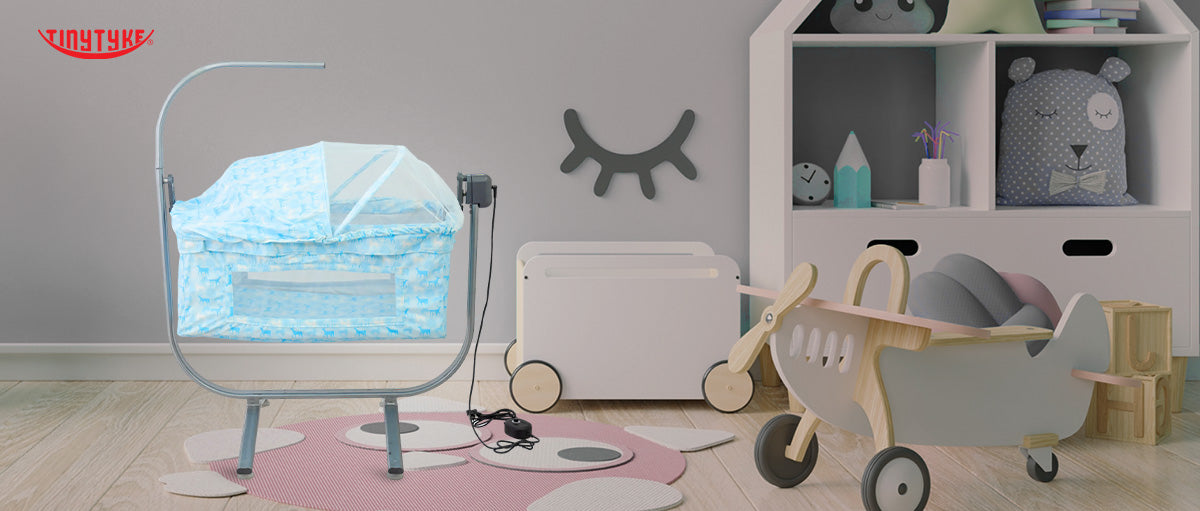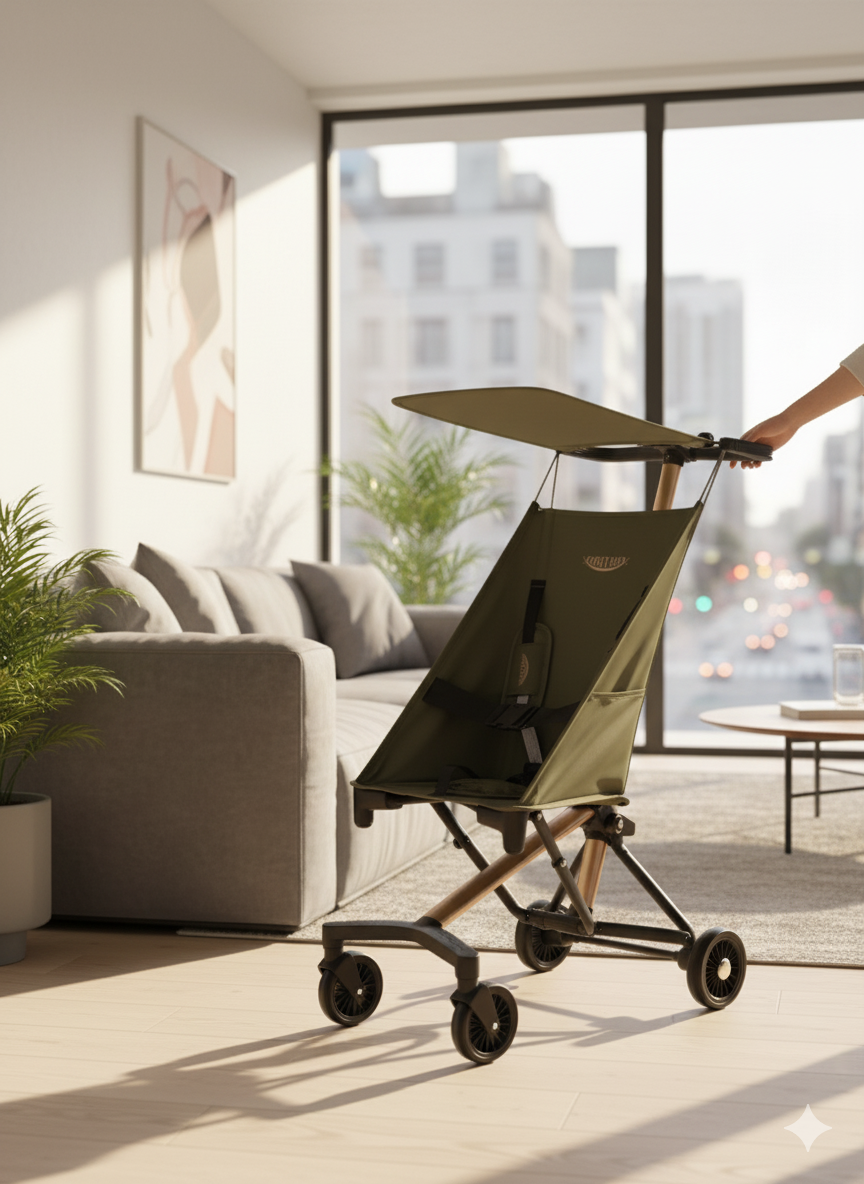When it comes to helping your baby sleep peacefully, parents will try just about anything — gentle rocking, lullabies, swaddles, and more. One option that’s gaining popularity, especially among modern Indian families, is the Electric Hammock for Babies. These hammocks offer the soothing, rhythmic motion of a traditional baby hammock, but with the added convenience of automation.
But like with any baby gear, it’s natural to wonder: Is it safe? Is it worth it? Will my baby actually benefit from it?
In this blog, we’ll break down the pros and cons of electric hammocks to help you make an informed decision for your baby’s comfort and your peace of mind.
What Is an Electric Baby Hammock?
An Electric Hammock for Baby is a modern version of the traditional Indian jhula or cradle. It’s typically made from soft, breathable fabric—often cotton hammocks for baby and suspended from a sturdy frame or ceiling hook. The key difference? It comes with a motorized mechanism that gently rocks or bounces the hammock, mimicking the motion babies love most — the one they felt in the womb.
Many parents turn to electric hammocks as a sleep aid during the early months, especially for fussy or colicky babies who find it hard to settle.
The Pros of Using an Electric Hammock for Your Baby
✅ Soothes Baby Quickly
The gentle bouncing or rocking motion of an electric baby hammock can calm a fussy baby in minutes. For many infants, the hammock simulates the feeling of being held or rocked in a parent’s arms — which is incredibly comforting.
This means less crying, shorter bedtime routines, and longer naps — something every sleep-deprived parent can appreciate.
✅ Hands-Free Support
Newborns often want constant rocking, which can be physically exhausting for parents. With an electric hammock, the motion continues even when your arms need a break — whether it’s to take a shower, eat a meal, or catch your breath.
It’s like having an extra pair of helping hands when you really need them.
✅ Promotes Healthy Sleep Patterns
Babies love motion. That’s why many fall asleep during car rides or stroller walks. An electric baby hammock swing offers that same motion in a more controlled, consistent way — helping babies transition from light sleep to deeper sleep more easily.
This can result in better naps and more consolidated nighttime sleep over time.
✅ Breathable and Comfortable Fabric
Most electric hammocks use cotton hammock fabric for babies, which is lightweight, breathable, and gentle on your baby’s skin. This minimizes overheating and supports good air circulation — two important factors for safe sleep.
The Cons (and What to Be Cautious About)
While electric baby hammocks can be incredibly helpful, they aren’t perfect for every baby or family. Here are a few considerations to keep in mind:
⚠️ Limited Age and Weight Range
Electric hammocks are generally best for newborns up to about 6–9 months, depending on the model. As your baby starts to roll over, sit up, or pull themselves up, it may no longer be safe to use.
Always follow the manufacturer’s weight and age guidelines strictly to avoid safety risks.
⚠️ Dependency on Motion
Some babies may become reliant on the rocking motion to fall asleep. While this isn’t always a problem, it can create a challenge when transitioning to a crib or bed later on.
One solution? Use the hammock for naps or bedtime, but once the baby is drowsy, switch off the motion so they gradually learn to self-sooth
⚠️ Needs Proper Installation
If you're hanging your hammock from the ceiling, it’s crucial that the setup is 100% secure. An improperly installed baby hammock could pose a serious risk. If you're using a stand-based electric model, ensure it's on a flat surface and cannot tip over.
Some parents prefer hammock stands that are portable and don’t require drilling into ceilings or walls — a great choice for renters or families who move often.
⚠️ Battery or Power Dependency
Electric hammocks require either electricity or batteries to run, depending on the model. That means the soothing motion might stop during power outages or when batteries run out — so it’s smart to always have a backup plan for naps or bedtime.
Is a Cotton Hammock Better Than Other Materials?
Yes — and for good reason. Cotton hammocks for babies are lightweight, breathable, and easy to clean. Natural cotton also helps reduce skin irritation, which is particularly important for babies with sensitive skin.
Synthetic materials may trap heat or feel rough, whereas cotton stays cool and soft — ideal for Indian climates.
Tips for Safe Hammock Use
If you decide to try an electric hammock for your baby, here are some safety guidelines to follow:
✅ Always supervise your baby while the hammock is in motion.
✅ Use it only on a flat, stable surface if using a stand.
✅ Do not add pillows or loose bedding inside the hammock.
✅ Ensure your baby sleeps on their back, as recommended by pediatricians.
✅ Transition your baby to a crib once they start rolling or exceeding the weight limit.
Final Thoughts: Is an Electric Hammock Right for You?
Like many baby products, the answer depends on your baby’s temperament, your lifestyle, and your parenting preferences. If your little one struggles to settle down or needs constant rocking to sleep, an electric hammock for babies can be a total game changer — giving both baby and parent the rest they need.
At Tinytyke Baby, you’ll find a thoughtfully curated range of baby hammocks swing, including motorized and manual options made from premium cotton for comfort and breathability.
Ultimately, an electric baby hammock isn’t just a sleep solution — it’s a moment of calm in the often chaotic early days of parenting.
















